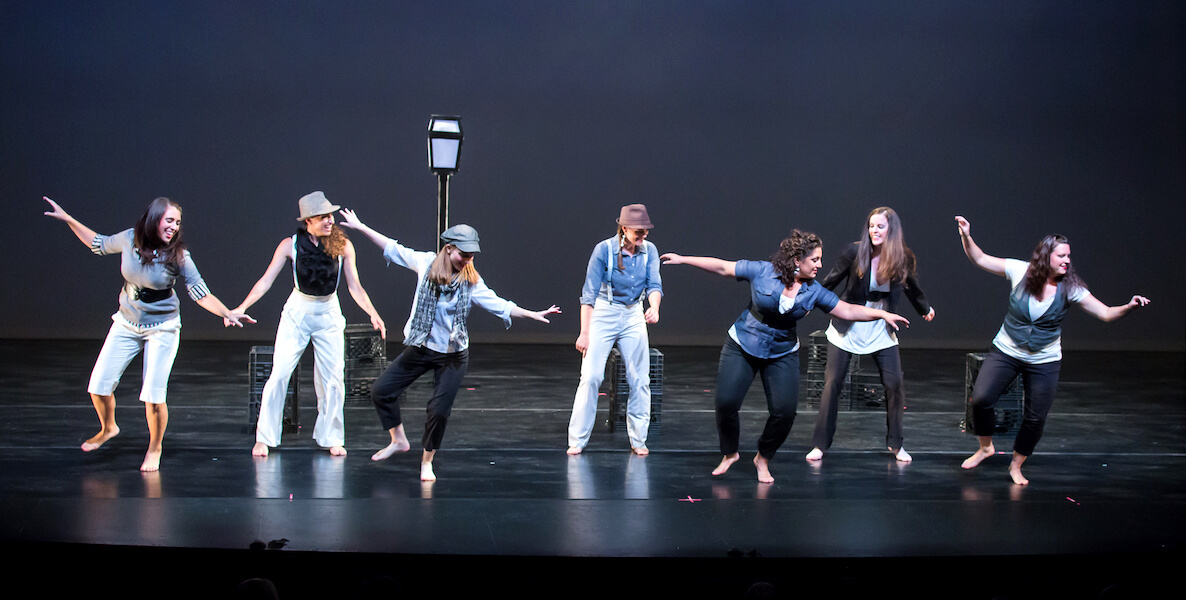Embodiment bridges theory and practice in Kat Echevarria Richter’s career, both as co-founder and artistic director of The Lady Hoofers Tap Ensemble and as an educator and scholar of dance.
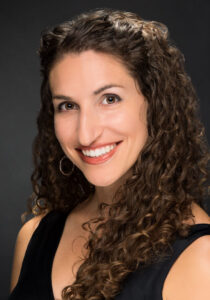
Richter is dedicated to making tap dancing and its history accessible on stage, in the classroom, and on an institutional level. Richter’s choreography explores the history of jazz music, the performance of gender roles, and the staging of so-called “vernacular” dance forms.
Richter’s work with The Lady Hoofers’ residency program at John Moffet Elementary School not only teaches students how to dance, but also dives into tap’s history as a uniquely Black, American, vernacular dance. She brings this historical awareness to her role as an administrator as well.
“We aim to instill a sense of pride in our students—of history, of ownership, of being part of an ongoing legacy—and we want to empower them to bring their own voices to tap, instead of just memorizing steps or routines,” Richter says. “We’re also making significant changes to our residency program, such as diversifying the teaching staff so that students see themselves represented in leadership positions.”
In partnership with the Forman Arts Initiative, The Citizen reached out to Richter to find out more about her work, and its resonance for today. This interview has been edited and condensed.
![]()
How did The Lady Hoofers get their start?
Our start was at the Philadelphia FringeArts Festival. After breaking even by $11 in our first show, we decided, “Okay, we’ve got something. Let’s run with it.” We’re celebrating our 10th anniversary. I co-direct the company with Katie Budris, who’s the managing director and is absolutely fabulous in terms of administration.
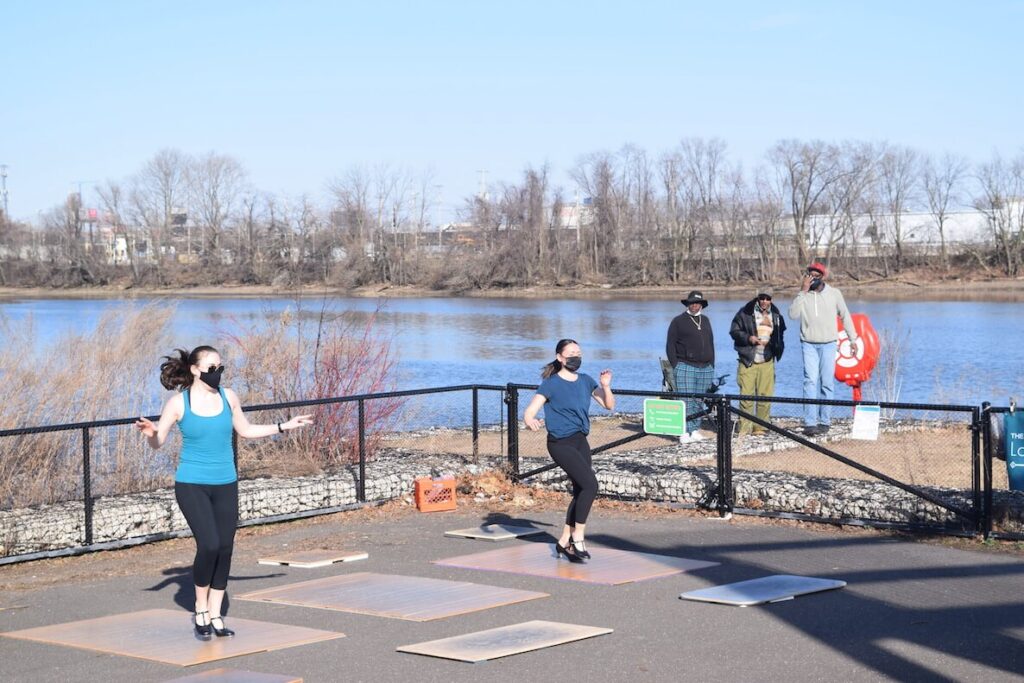
Are you a Philadelphia native?
I was born in New Hampshire, grew up in New Jersey and moved to Philly after college. My first job out of school was in development at the Walnut Street Theatre, which has an apprentice program for all aspects of not only theater but art administration as well. I spent a year there then I moved to London for grad school. [I’ve been back here since] 2011, the same year that the company started. [I’m currently] living in South Philly’s Girard Estate neighborhood.
Aside from geographic, what other communities—whether artistic practice or something else entirely—do you feel you’re a part of, and what binds you to them?
As a tap dancer, there is, really, a global rhythm tap family. More locally, there’s the dance community here in Philly. Tap is a very small world. Once you know a few people, you know everybody pretty quickly. There’s a lot of great tap dancers in Philly.
Our Center City home base for The Lady Hoofers is right on the Avenue of the Arts. We’ll be back at the Suzanne Roberts [Theater] for our fifth season this year. The company also runs a residency program in Kensington, where we provide the entire fifth-grade class—a predominantly African American and Latino student body—at John Moffet Elementary School with free tap shoes and lessons.
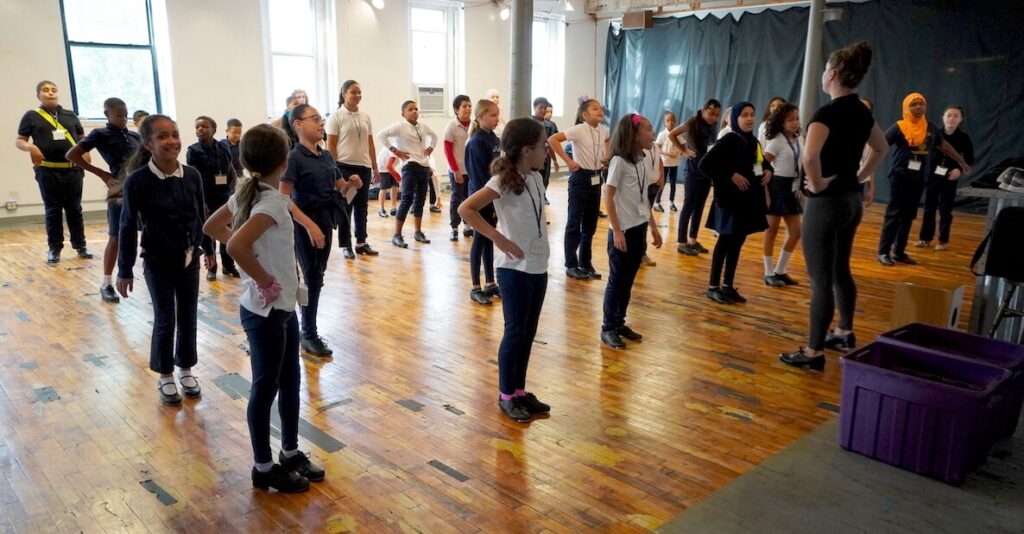
We’ve been with Moffet for eight years now, but the program was on hold this year due to Covid. It’s given my organization time to reflect. We’re these nice white ladies who come in and teach these kids about tap then we’re gone at the end of the year. Who is that really serving?
What might it mean when you’re teaching primarily Black and Latino students?
One of the first things we do at Moffet is to ask the students where they think tap came from. They usually guess France or Ireland and are shocked to learn that tap was created in the United States. It originated as a Black vernacular dance and can also be considered an African diaspora art form, along with jazz and hip-hop.
We aim to educate our audiences and our students about the true history of tap by naming, honoring, and uplifting the stories of those who created this art form, especially the often ignored histories of Black women in tap, such as the Whitman Sisters, Jeni LeGon, or my mentor Deborah Mitchell. Philadelphia’s own Germaine Ingram has done amazing work to help unearth the histories of Black women in tap!
What, from your perspective, are the implications of The Lady Hoofers working in a historically Black dance style? What challenges does that present?
I’m a light-skinned, white-passing Puerto Rican woman working in a Black art form. This informs my work as a dancer/choreographer, as an artistic director, as an educator, and as a scholar: it’s about ally-ship, advocacy, and using my white privilege to help advance the cause of social justice and racial equity through this art form that has brought me so much joy.
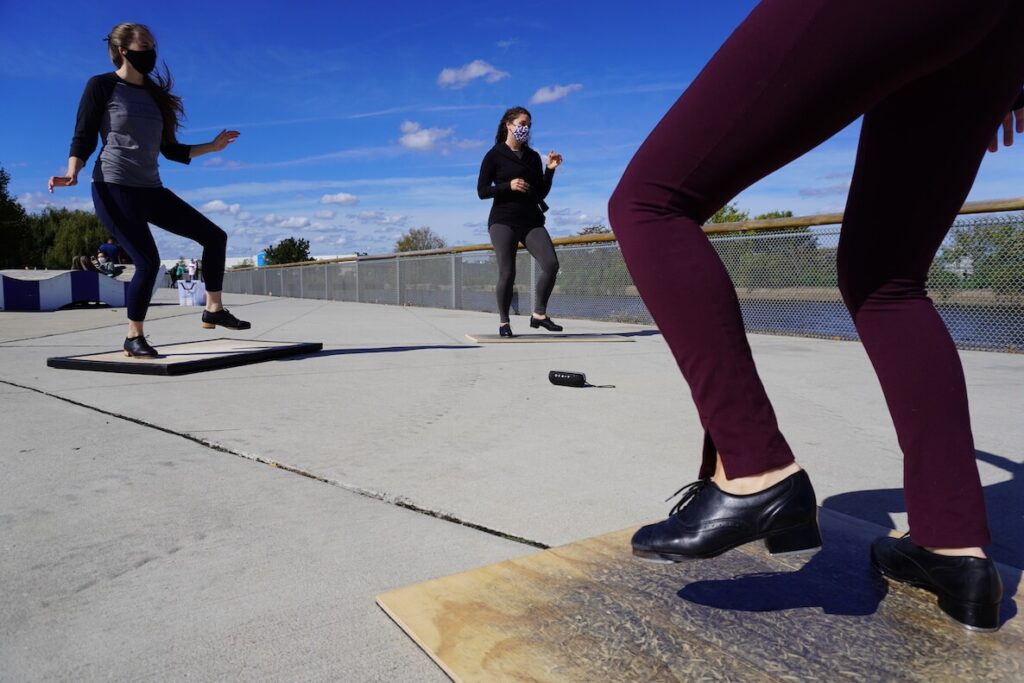
Across the different elements of your work, what does creativity mean to you? How does it manifest in your role as artistic director, and also as an administrator and performer?
Using dance, and especially tap, as a tool for education and also for social justice is really important to me, so my creative juices go toward that. Right now, especially where I am as a dancer, as a parent, and in my career, I tend to be focused more on the administration side of things. Part of that is due to Covid. I definitely do still choreograph and set pieces for the company, but what really gets me excited is: How do we make the program at Moffet more sustainable? How do we help the kid who loves to tap but comes from a family that can’t afford lessons beyond what we provide? How to give them a fair shot in terms of training and bridge the gap between that child and one who goes to a competition studio in the suburbs? What keeps me up at night is figuring out those sorts of things.
What kind of impact could it have for Philadelphia to take culture and creativity more seriously? What would it require?
There’s no shortage of artists or talent, but there is such inequity in terms of funding structures. A lot of that comes down to systemic racism in the way funds are allocated, the types of arts that are prioritized, the sort of dichotomy between high art and low art, between Western theatrical dance and vernacular or social dance. There needs to be a real reckoning—and I’m not speaking specifically for the dance sector at this point—about the Eurocentrism that really pervades how arts funding is allocated in the city.
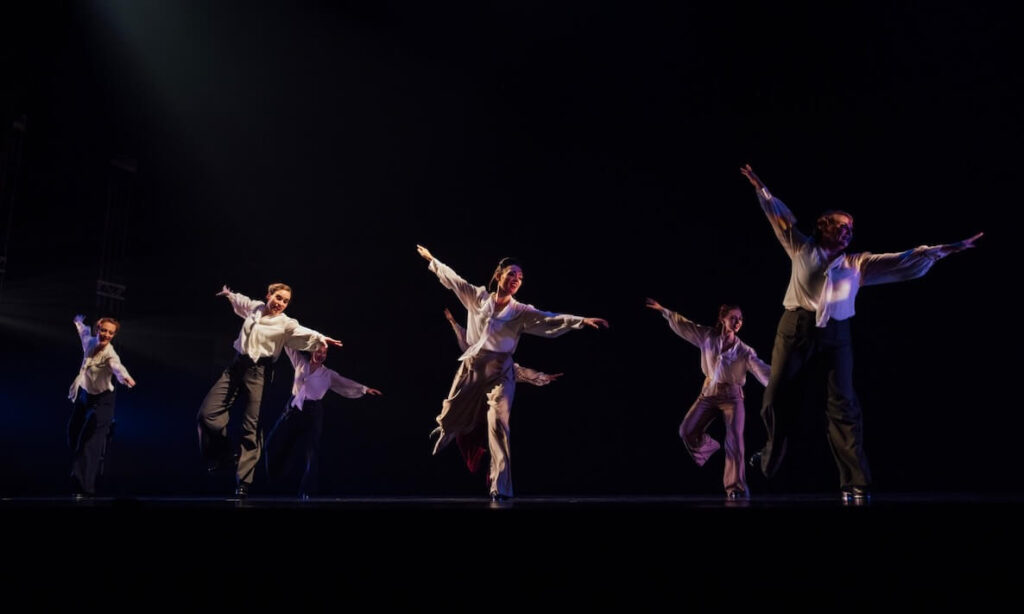
One of my dreams is to talk with artistic directors of other arts organizations and say, “Okay, we had 75 kids come through the program and 10 are just burning to dance. Like, they have to dance. I want to send two of them on scholarship to Philadelphia Ballet’s Training Program. I want two on scholarship for me, I want two at Koresh, I want two at Kun Yang Lin. Can you help me fund something for these kids who have a love of dance and want to take that further?” That’s what I want. I don’t know if that’s what the parents of these students want. [Laughs.] That’s a conversation that still needs to happen.
Could you speculate on what creativity looks like for the students?
We love working with the students at Moffet in particular because the school’s amazing music teacher and a partnership with Al-Bustan Seeds of Culture, another Philly arts organization, [have developed the kids’] musicality and their understanding of rhythm. They’re just fabulous already. When we get in with our tap shoes, they’re ready to fly.
We prioritize improvisation—a hallmark of tap—and really encourage the kids to create their own routines. I think of creativity in that sense as being student generated. “Here are some tap steps that you can use. What do you guys wanna do? What do you wanna come up with?”
In the context of 21st-century art dynamics, what might the history of tap mean for who’s part of The Lady Hoofers, as a company, and for your audiences?
I wish I could say that the demographics of our ensemble and our audiences reflected the history and diversity of our art form—not to mention the city of Philadelphia!—but we’re not there yet. Like many nonprofit organizations, we function within a system that has historically privileged whiteness, but we’re working to change this. We still have a lot more to do, but we’re committed for the long haul.
Blake Bradford is a Philadelphia-based cultural advocate, educator and writer. His appointments include serving as the Director of the Lincoln University-Barnes Foundation Museum Studies Program and as the inaugural Bernard C. Watson Director of Education at the Barnes Foundation.
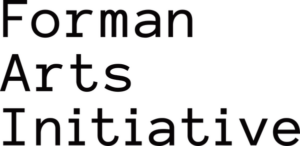 This story is part of a partnership between The Philadelphia Citizen and Forman Arts Initiative to highlight creatives in every neighborhood in Philadelphia. It will run on both The Citizen and FAI’s websites.
This story is part of a partnership between The Philadelphia Citizen and Forman Arts Initiative to highlight creatives in every neighborhood in Philadelphia. It will run on both The Citizen and FAI’s websites.
![]()
MORE CITIZEN ARTS COVERAGE
Header photo by Frank Bicking Photography



